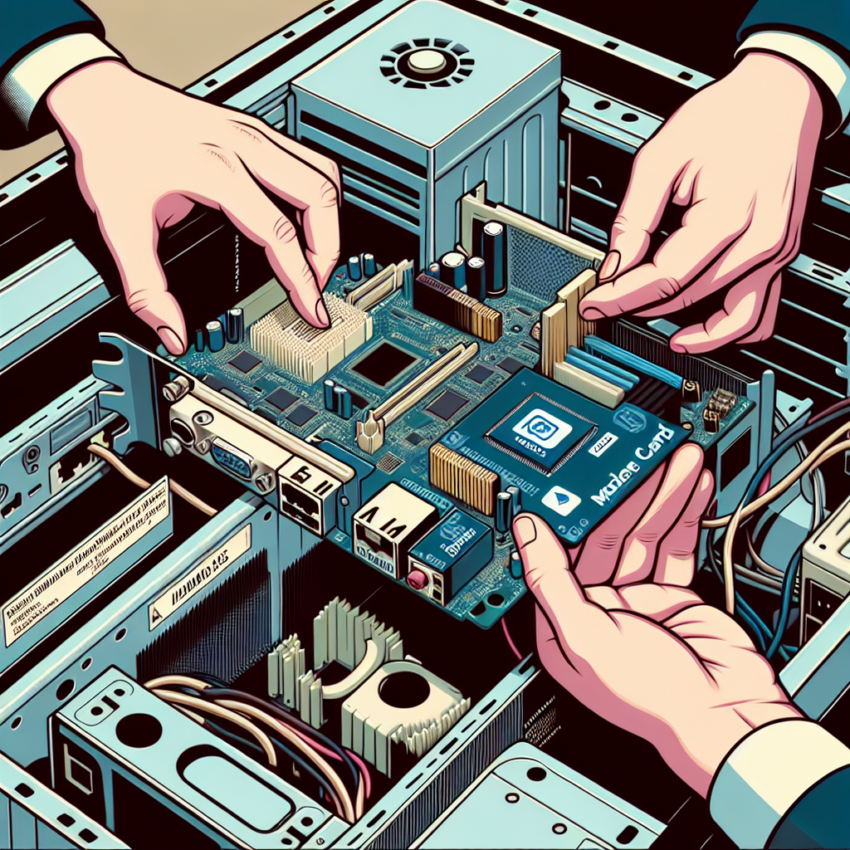Installing a modem card in your computer can upgrade your connectivity capabilities, providing faster and more reliable internet access. Whether you’re adding a modem card to a new build or upgrading an old one, this guide will take you through the necessary steps to get your modem card up and running.
Tools Needed
- Modem card
- Computer case
- Philips head screwdriver
- Anti-static wrist strap
- Documentation or manual of the modem card
Before You Begin
Before diving into the installation process, it’s crucial to ensure that your computer is turned off and unplugged from the power source. This will prevent any damage to the components and ensure your safety.
Check Your Computer’s Slots
Your modem card will need an available PCI or PCIe slot on your motherboard. Refer to your computer’s manual to locate these slots. Here’s a brief overview of the main types of slots you might encounter:
| Slot Type | Description |
|---|---|
| PCI | An older, slower slot, typically white in color. |
| PCIe | A faster and more modern slot, often used for peripherals and graphic cards. |
Step-by-Step Installation Guide
Step 1: Open the Computer Case
Using the Philips head screwdriver, remove the screws securing the side panel of your computer case. Set the screws aside in a safe place, as you’ll need them later to reassemble the case.
Step 2: Ground Yourself
Before touching any internal components, ground yourself by wearing an anti-static wrist strap. This prevents static electricity from damaging the delicate electronic parts in your computer.
Step 3: Locate the Appropriate Slot
With the side panel removed, locate an available PCI or PCIe slot on your motherboard where you’ll install the modem card. If there is a cover over the slot, remove it by unscrewing the retaining screw.
Step 4: Insert the Modem Card
Cautiously insert the modem card into the designated slot by aligning the card’s connectors with the slot’s pins. Apply firm pressure until the card slips into place securely.
Step 5: Secure the Modem Card
Once properly seated, secure the modem card by screwing it into place using the screw from the slot cover you removed earlier.
Step 6: Close the Computer Case
Reattach the side panel of your case and secure it with the screws you set aside earlier.
Step 7: Reconnect and Power On
Plug your computer back into the power outlet and turn it on. Your operating system should detect the new modem card and begin the installation of necessary drivers. Follow on-screen instructions to complete the driver installation. If your system does not detect the new hardware, consult the documentation provided with the modem card for manual driver installation.
Troubleshooting Tips
If the modem card isn’t detected or working correctly, consider the following troubleshooting steps:
- Check the card’s seating: Ensure the card is firmly and properly seated in the slot.
- Install the latest drivers: Visit the manufacturer’s website to download and install the latest drivers for your modem card.
- Check for hardware conflicts: Make sure there are no conflicts with other installed devices.
- Verify compatibility: Confirm that your modem card is compatible with your operating system and motherboard.
Conclusion
Installing a modem card is a straightforward process that can significantly enhance your computer’s connectivity capabilities. Whether for faster internet speeds or improved reliability, following these steps will help ensure a smooth installation. Always consult the modem card’s documentation if you encounter unique circumstances or additional requirements.

